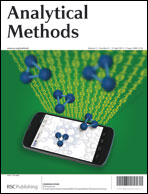Objectives: Children's stress research may benefit from the establishment of a standardized and validated methodology to measure cortisol and cortisone in hair, as this biomatrix is non-invasive, easily obtainable and more practicable compared to other commonly used matrices in stress research. Methods: A new analytical method using ultra performance liquid chromatography-tandem mass spectrometry (UPLC-MS/MS) is developed and validated to simultaneously detect cortisol and cortisone in children's hair. Applicability of the UPLC-MS/MS method is tested in 6 cm hair samples of 223 elementary school girls, and cortisol-to-cortisone ratios are calculated. Results: The LOD and LOQ were 2 pg mg−1 and 5 pg mg−1 respectively, for both cortisol and cortisone. Good linear responses in the ranges 5–1000 pg mg−1 (R2 > 0.99) and extraction recoveries of >84% and >87% were observed for cortisol and cortisone respectively. Relative standard deviation percentages were <13.4% (cortisol) and <14.1% (cortisone) for intra-assay precision, and <18.8% for inter-assay precision for both analytes at LOQ. %Bias was <18.9% for intra- and inter-day accuracy at LOQ, and <12.3% at the other concentrations. The median hormone concentrations (pg mg−1, range) were 8.80 (5–1330.48), 8.62 (5–69.6) and 0.80 (0.11–54.4) for cortisol (N = 39), cortisone (N = 168) and the cortisol-to-cortisone ratio (N = 31) respectively. Conclusions: We presented a UPLC-MS/MS method with good precision and accuracy to simultaneously measure cortisol and cortisone in hair samples 6 cm long. Our observations suggest that it is advisable for future research not to analyse full hair segments up to 6 cm long because of inter-segment loss, but to restrict to more proximal fragments which may more accurately represent HPA activity.

You have access to this article
 Please wait while we load your content...
Something went wrong. Try again?
Please wait while we load your content...
Something went wrong. Try again?


 Please wait while we load your content...
Please wait while we load your content...